Last weekend of frigid and snowy January, I went to the Metro Show to see some very inspiring works that I have seen in recent years. Held at the Metropolitan Pavillon in Chelsea, the Metro Show features very manageable 37 exhibitors who deal antique prints (C&J Goodfriend, for example, who brought etchings by Dürer, Rembrandt, Piranesi and Picasso, among others) to folk art sculptures to contemporary art and everything in between. I was mostly interested in viewing what is generally termed as “outsider art.”
The term outsider art was coined by art critic Roger Cardinal in 1972 as an English synonym for art brut, a label created by Jean Dubuffet to describe art created outside the boundaries of official culture; Dubuffet focused particularly on art by those on the outsides of the established art scene such as an insane asylum inmates and children. German Expressionists particularly fell in love with the schizophrenic artists such as Adolf Wölfli, Karl Brendel and August Naterrer and adopted them as creative muses by appropriating their imagery. Over the years, the parameters of outsider art have expanded dramatically to include art made by a wide variety of art-makers from all walks of life, from all cultures, from all age groups created by people outside what is generally considered mainstream “art world.”
Even though there were plenty of works from well established contemporary artists at the fair, there were still many pieces that are unselfconsciously obsessive and detail oriented that I draw most inspiration from. I particularly admired the works by now well known outsider artists such as Eugene Andolsek (American Primitive Art, Photos 1 & 2), who worked as a stenographer for the Rock Island Railroad all his life or Frank Jones (Carl Hammer Gallery, Photo 11), who began to draw in 1964 while serving a life sentence for murder in the Texas State Penitentiary in Huntsville. Another outstanding examples at the fair were a rare group of drawings called “The Sheridan Pages” at H. Malcolm Grimmer (Photos 4 – 6). The drawings were made by Cheyenne Indians around 1870 in colored pencil on ledger paper brought into the area by white businessmen to keep track of financial transactions. The drawings show the courtship rituals of a tribe better known as warriors with an astounding delicacy and straight forwardness that is unparalleled in most contemporary art.
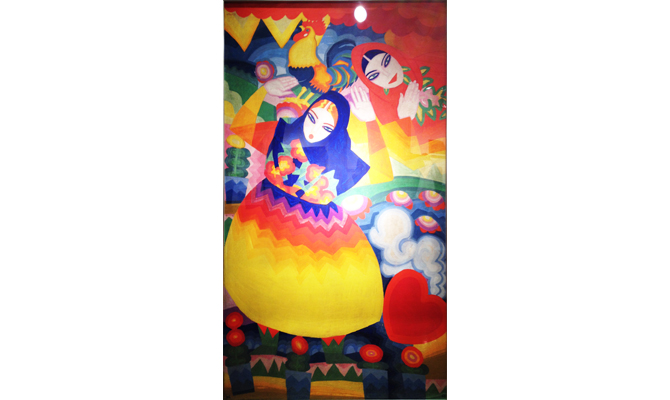

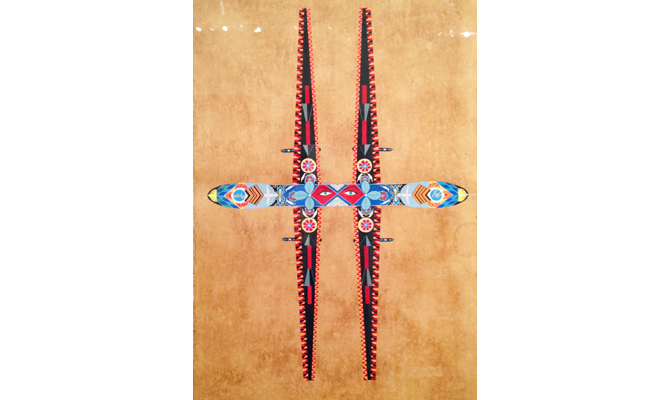

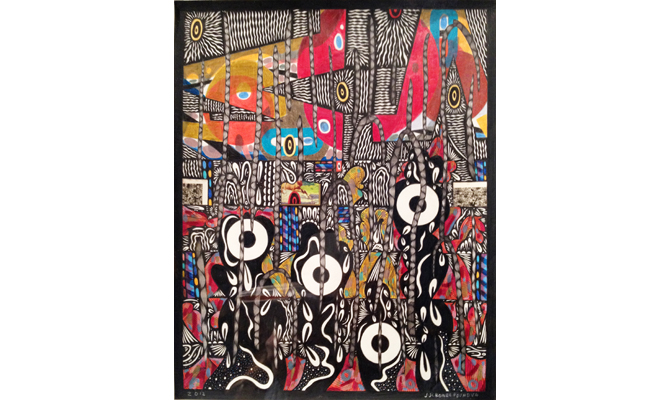
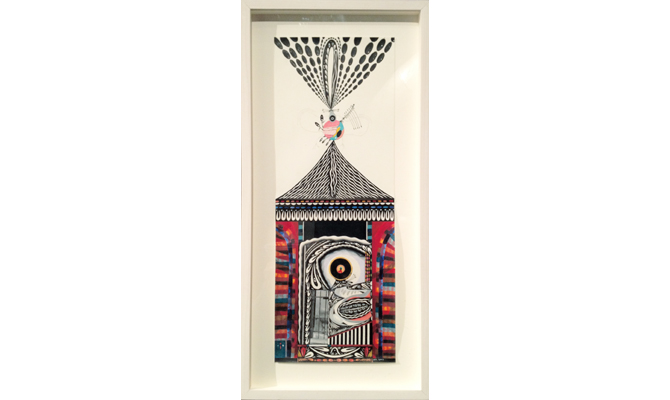

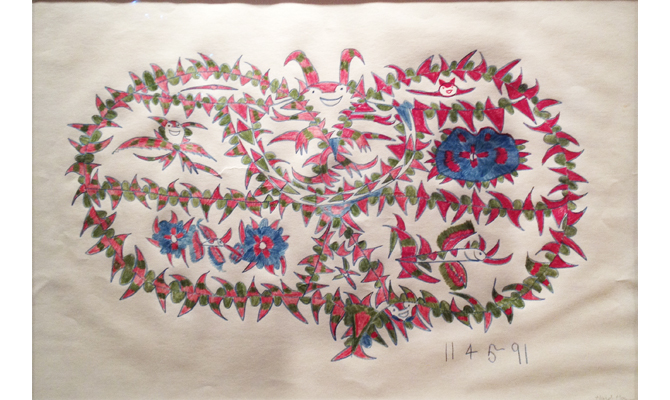
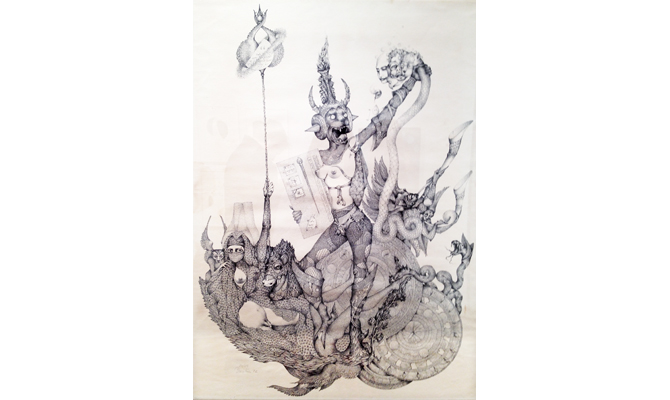
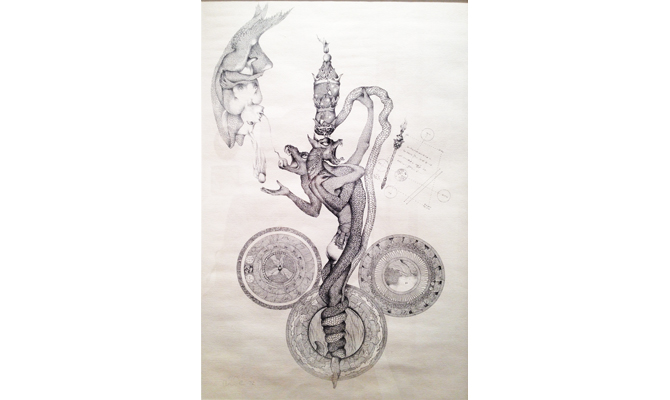
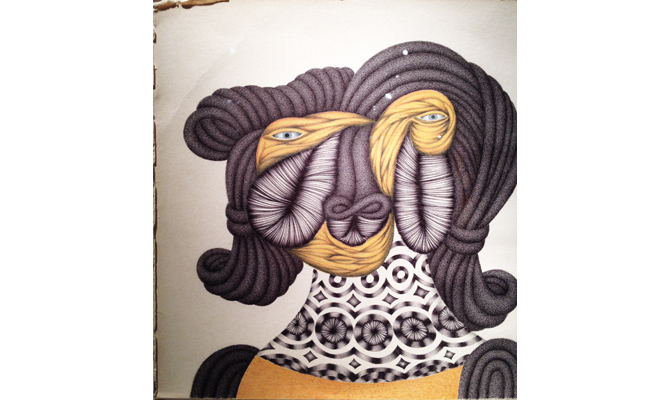

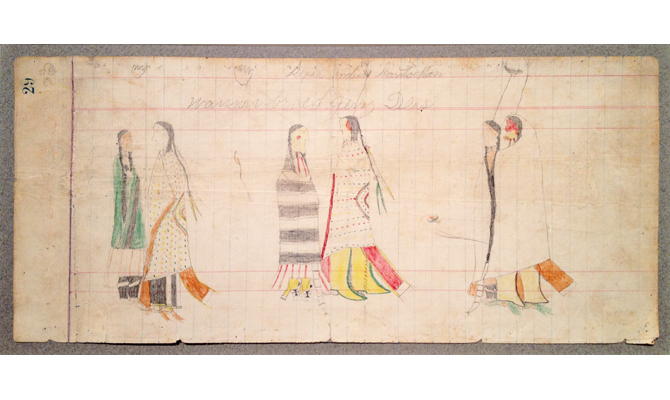

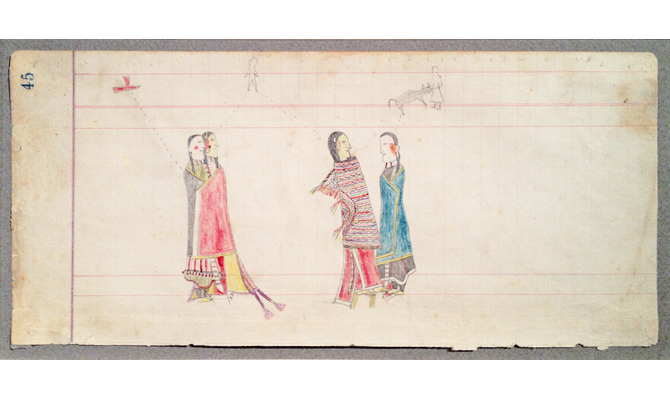
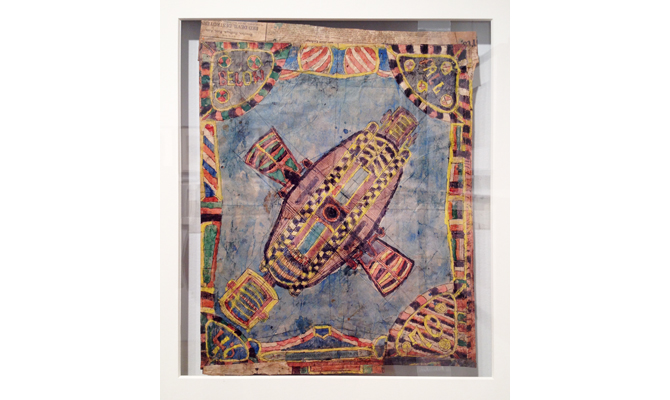
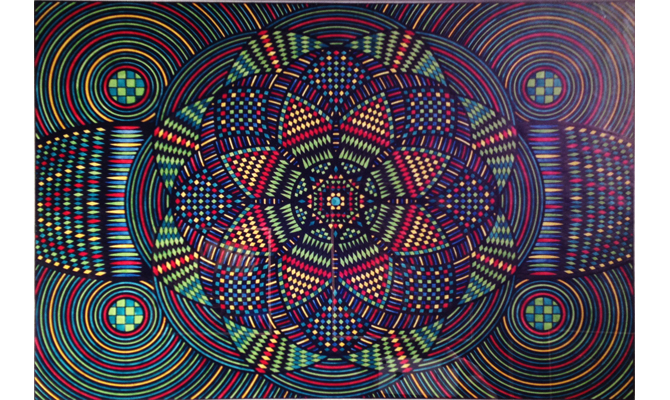
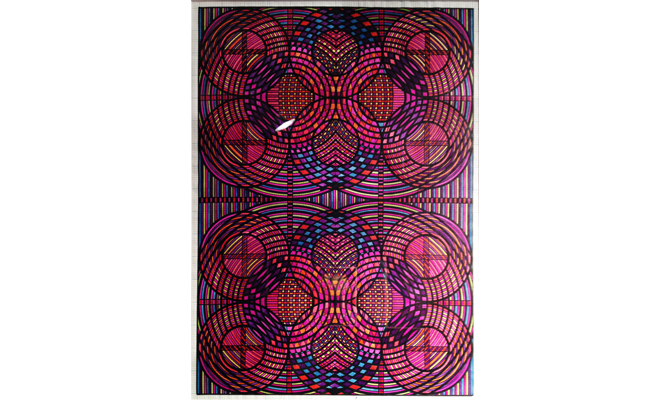
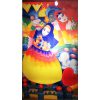
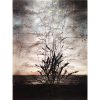
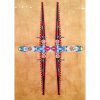
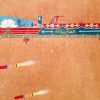
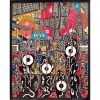
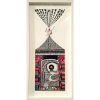

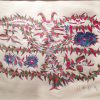
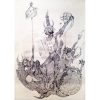
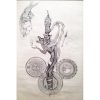
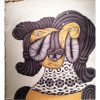
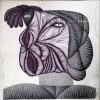
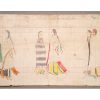


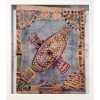
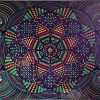

 Kira Nam Greene’s work explores female sexuality, desire and control through figure and food still-life paintings, surrounded by complex patterns. Imbuing the feminist legacies of Pattern and Decoration Movement with transnational, multicultural motifs, Greene creates colorful paintings that are unique combinations of realism and abstraction, employing diverse media such as oil, acrylic, gouache, watercolor and colored pencil. Combining Pop Art tropes and transnationalism, she also examines the politics of food through the depiction of brand name food products, or junk food. Recently, Greene started a figurative painting series spurred by the 2016 Presidential Election, Women’s March, #metoo movement and ensuing crisis of conscience, this new body of work aspires to present the power of collective action by women.
Kira Nam Greene’s work explores female sexuality, desire and control through figure and food still-life paintings, surrounded by complex patterns. Imbuing the feminist legacies of Pattern and Decoration Movement with transnational, multicultural motifs, Greene creates colorful paintings that are unique combinations of realism and abstraction, employing diverse media such as oil, acrylic, gouache, watercolor and colored pencil. Combining Pop Art tropes and transnationalism, she also examines the politics of food through the depiction of brand name food products, or junk food. Recently, Greene started a figurative painting series spurred by the 2016 Presidential Election, Women’s March, #metoo movement and ensuing crisis of conscience, this new body of work aspires to present the power of collective action by women.